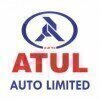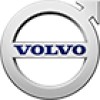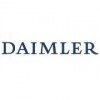Filter interviews by
SML Isuzu Junior Manager Interview Questions and Answers
10 Interview questions
Main steering geometry parameters include caster, camber, toe, and steering axis inclination.
Caster: The angle of the steering axis when viewed from the side of the vehicle.
Camber: The angle of the wheels when viewed from the front of the vehicle.
Toe: The angle of the wheels when viewed from above the vehicle.
Steering Axis Inclination: The angle between the steering axis and vertical axis of the vehicle.
Pistons seize when lubrication and cooling systems fail, causing friction and heat buildup.
Pistons rely on lubrication to reduce friction between moving parts
Cooling system prevents overheating by circulating coolant around the engine
Without proper lubrication, friction increases and can cause the piston to seize
If the cooling system fails, heat buildup can also lead to piston seizure
Clamp load is the force applied to hold the clutch plates together, while release load is the force needed to disengage the clutch plates.
Clamp load is the force that presses the clutch plates together to transmit power from the engine to the transmission.
Release load is the force required to disengage the clutch plates, allowing for gear changes or stopping the vehicle.
The clamp load must be greater than the rele...
Thermostat regulates the flow of coolant in the engine cooling system to maintain optimal operating temperature.
Thermostat opens and closes to control the flow of coolant through the radiator.
Helps maintain the engine at its optimal operating temperature for efficiency and performance.
Prevents overheating by regulating the coolant flow based on the engine temperature.
Common issues include thermostat getting stuck ...
The radiator cap helps regulate the pressure in the cooling system of a vehicle.
Prevents coolant from boiling over by raising the boiling point
Maintains the proper pressure in the cooling system
Allows excess coolant to flow into the overflow tank and back into the radiator when needed
Symptom of piston seizure due to lubrication system failure is engine overheating and loss of power.
Engine overheating
Loss of power
Increased engine noise
Visible damage to piston or cylinder walls
The gear box in a vehicle is responsible for transmitting power from the engine to the wheels at different speeds.
The gear box allows the driver to change gears to match the speed and power requirements of the vehicle.
Different gears provide different torque and speed ratios, allowing the vehicle to accelerate, climb hills, or maintain speed efficiently.
Manual gear boxes require the driver to manually shift gears,...
Swirl in engine refers to the rotational motion of air or fuel mixture inside the combustion chamber, improving combustion efficiency.
Swirl helps in better mixing of air and fuel, leading to more efficient combustion.
It can improve fuel economy and reduce emissions.
Examples include swirl-inducing intake ports or valves in engines.
Preload in bearings is the internal load applied to a bearing before it is put into service to reduce play and increase rigidity.
Preload is required to eliminate internal clearance and increase rigidity in bearings.
It is commonly used in high precision applications where minimal play is essential.
Types of bearings that may require preload adjustment include angular contact ball bearings and tapered roller bearings...
ATS system is a type of transmission system in vehicles, while gear and engine type refer to specific components of a vehicle.
ATS system stands for Automatic Transmission System, which allows for automatic shifting of gears in a vehicle.
Gear type refers to the specific type of gear system in a vehicle, such as manual or automatic transmission.
Engine type refers to the specific type of engine in a vehicle, such as ...
SML Isuzu Junior Manager Interview Experiences
4 interviews found
(2 Questions)
- Q1. What is swirl in engine ?
- Ans.
Swirl in engine refers to the rotational motion of air or fuel mixture inside the combustion chamber, improving combustion efficiency.
Swirl helps in better mixing of air and fuel, leading to more efficient combustion.
It can improve fuel economy and reduce emissions.
Examples include swirl-inducing intake ports or valves in engines.
- Q2. What is symptom of piston seizure due to lubrication system failure?
- Ans.
Symptom of piston seizure due to lubrication system failure is engine overheating and loss of power.
Engine overheating
Loss of power
Increased engine noise
Visible damage to piston or cylinder walls
(9 Questions)
- Q1. What is Squish in engine ?
- Ans.
Squish in engine refers to the process of compressing the air-fuel mixture in the combustion chamber before ignition.
Squish helps in creating turbulence for better mixing of air and fuel
It also helps in increasing the efficiency of combustion
Squish is achieved by the design of the combustion chamber and piston crown
- Q2. What is the role on thermostat in engine cooling system?
- Ans.
Thermostat regulates the flow of coolant in the engine cooling system to maintain optimal operating temperature.
Thermostat opens and closes to control the flow of coolant through the radiator.
Helps maintain the engine at its optimal operating temperature for efficiency and performance.
Prevents overheating by regulating the coolant flow based on the engine temperature.
Common issues include thermostat getting stuck close...
- Q3. How piston seize until lubrication system and cooling system in intact?
- Ans.
Pistons seize when lubrication and cooling systems fail, causing friction and heat buildup.
Pistons rely on lubrication to reduce friction between moving parts
Cooling system prevents overheating by circulating coolant around the engine
Without proper lubrication, friction increases and can cause the piston to seize
If the cooling system fails, heat buildup can also lead to piston seizure
- Q4. What is the role of radiator cap ?
- Ans.
The radiator cap helps regulate the pressure in the cooling system of a vehicle.
Prevents coolant from boiling over by raising the boiling point
Maintains the proper pressure in the cooling system
Allows excess coolant to flow into the overflow tank and back into the radiator when needed
- Q5. What is the clamp load and release load in clutch ?
- Ans.
Clamp load is the force applied to hold the clutch plates together, while release load is the force needed to disengage the clutch plates.
Clamp load is the force that presses the clutch plates together to transmit power from the engine to the transmission.
Release load is the force required to disengage the clutch plates, allowing for gear changes or stopping the vehicle.
The clamp load must be greater than the release l...
- Q6. What is the role of gear box in a vehicle?
- Ans.
The gear box in a vehicle is responsible for transmitting power from the engine to the wheels at different speeds.
The gear box allows the driver to change gears to match the speed and power requirements of the vehicle.
Different gears provide different torque and speed ratios, allowing the vehicle to accelerate, climb hills, or maintain speed efficiently.
Manual gear boxes require the driver to manually shift gears, whil...
- Q7. What is chamber angle? Why it’s required?
- Q8. What is the main steering geometry parameters?
- Ans.
Main steering geometry parameters include caster, camber, toe, and steering axis inclination.
Caster: The angle of the steering axis when viewed from the side of the vehicle.
Camber: The angle of the wheels when viewed from the front of the vehicle.
Toe: The angle of the wheels when viewed from above the vehicle.
Steering Axis Inclination: The angle between the steering axis and vertical axis of the vehicle.
- Q9. What is pre load in bearings …why its required and which type of bearing its need to adjust ?
- Ans.
Preload in bearings is the internal load applied to a bearing before it is put into service to reduce play and increase rigidity.
Preload is required to eliminate internal clearance and increase rigidity in bearings.
It is commonly used in high precision applications where minimal play is essential.
Types of bearings that may require preload adjustment include angular contact ball bearings and tapered roller bearings.
Interview Preparation Tips
An easy blend of technical and general knowledge.
(1 Question)
- Q1. From CV and projects
I applied via Naukri.com and was interviewed in Sep 2023. There was 1 interview round.
(1 Question)
- Q1. ATS SYSTEM, difference and gear and engine type
- Ans.
ATS system is a type of transmission system in vehicles, while gear and engine type refer to specific components of a vehicle.
ATS system stands for Automatic Transmission System, which allows for automatic shifting of gears in a vehicle.
Gear type refers to the specific type of gear system in a vehicle, such as manual or automatic transmission.
Engine type refers to the specific type of engine in a vehicle, such as gasol...
Interview Preparation Tips
I applied via Approached by Company and was interviewed in Mar 2022. There were 2 interview rounds.

(4 Questions)
- Q1. It's about the profile.
- Q2. Job role and knowledge of job profile
- Q3. GD &T drawing reading , drawing symbols sheet metal industry casting process and forging process
- Q4. HR round salary negotiation
Interview Preparation Tips
Top trending discussions






Interview questions from similar companies

I applied via Approached by Company and was interviewed before Jul 2021. There were 2 interview rounds.
(2 Questions)
- Q1. Basics of engine and it's principal ( troubleshooting)
- Ans.
Understanding engine basics and troubleshooting principles is crucial for effective management and maintenance.
Engines convert fuel into mechanical energy through combustion.
Common engine types include internal combustion engines (ICE) and electric engines.
Troubleshooting involves identifying issues like misfires, overheating, or poor fuel efficiency.
Example: A misfiring engine may indicate spark plug issues or fuel de...
- Q2. How root cause can be establish?
- Ans.
Root cause can be established by identifying the underlying reason for a problem or issue.
Gather data and information related to the problem
Analyze the data to identify patterns and trends
Use tools like fishbone diagrams or 5 whys to dig deeper into the issue
Identify the root cause and develop a plan to address it
Monitor progress and adjust the plan as needed
(1 Question)
- Q1. How you differentiate between process and Quality problem.
- Ans.
Process problem is related to the steps taken to complete a task while quality problem is related to the outcome of the task.
Process problem is related to the steps taken to complete a task
Quality problem is related to the outcome of the task
Process problem can be identified by analyzing the steps taken to complete a task
Quality problem can be identified by analyzing the outcome of the task
Examples of process problem i...
Interview Preparation Tips

I applied via Referral and was interviewed before Mar 2022. There were 2 interview rounds.

(2 Questions)
- Q1. What PPAP levels,FMEA,SPC,Control plan
- Ans.
PPAP levels, FMEA, SPC, and Control Plan are quality management tools used in manufacturing.
PPAP (Production Part Approval Process) levels are used to ensure that manufactured parts meet customer requirements.
FMEA (Failure Mode and Effects Analysis) is a tool used to identify and prevent potential failures in a product or process.
SPC (Statistical Process Control) is a method of monitoring and controlling a process to e...
- Q2. MSA ,TS 16049 awerness,IS0 9000
Interview Preparation Tips

I applied via Naukri.com and was interviewed in May 2023. There were 3 interview rounds.

Why ur change the previous job?
(2 Questions)
- Q1. What is tpm and jh and qm?
- Ans.
TPM stands for Total Productive Maintenance, JH stands for Job Hazard Analysis, and QM stands for Quality Management.
TPM is a systematic approach to equipment maintenance that aims to maximize productivity and minimize downtime.
JH is a process of identifying and analyzing potential hazards in a job or work environment to prevent accidents and injuries.
QM involves the activities and processes used to ensure that product...
- Q2. How u perform root cause analysis?
- Ans.
Root cause analysis is performed by identifying the underlying cause of a problem or issue.
Identify the problem or issue
Gather relevant data and information
Analyze the data to identify potential causes
Use techniques like the 5 Whys or Fishbone Diagram
Verify the root cause through testing or further investigation
Implement corrective actions to address the root cause
Interview Preparation Tips

I appeared for an interview in Jun 2024.
(2 Questions)
- Q1. Basic information
- Q2. Experience
(2 Questions)
- Q1. Technical questions regarding privious working company.
- Q2. Automobile engineering related basic questions

I applied via Recruitment Consultant and was interviewed in Jun 2021. There were 5 interview rounds.
Interview Questionnaire
5 Questions
- Q1. Regarding Electrical Engineering
- Q2. Regarding Eplan
- Q3. Regarding PLC
- Q4. Regarding Drives
- Q5. Regarding Safety standards
Interview Preparation Tips

I applied via Campus Placement and was interviewed before May 2022. There were 4 interview rounds.

Aptitude test in both tech and non tech questions.
Swatch bhrat topics of group of 4 people
(1 Question)
- Q1. Self introduction
Interview Preparation Tips
SML Isuzu Interview FAQs
Tell us how to improve this page.
SML Isuzu Interviews By Designations
- SML Isuzu Assistant Manager Interview Questions
- SML Isuzu Junior Manager Interview Questions
- SML Isuzu Junior Engineer Interview Questions
- SML Isuzu Production Interview Questions
- SML Isuzu Production Manager Interview Questions
- SML Isuzu Senior Marketing Manager Interview Questions
- SML Isuzu Manager Interview Questions
- SML Isuzu Customer Care Manager Interview Questions
- Show more
Interview Questions for Popular Designations
Overall Interview Experience Rating
based on 6 interview experiences
Difficulty level
Duration
Interview Questions from Similar Companies
SML Isuzu Junior Manager Reviews and Ratings
based on 35 reviews
Rating in categories
|
Assistant Manager
131
salaries
| ₹6.5 L/yr - ₹13.5 L/yr |
|
Junior Manager
131
salaries
| ₹5 L/yr - ₹10.6 L/yr |
|
Deputy Manager
75
salaries
| ₹9.9 L/yr - ₹16 L/yr |
|
Manager
44
salaries
| ₹12.4 L/yr - ₹20 L/yr |
|
Engineer
38
salaries
| ₹4.3 L/yr - ₹8.8 L/yr |

Hero Motors Company

Daimler India Commercial Vehicles

Bajaj Motors

Audi
- Home >
- Interviews >
- SML Isuzu Interview Questions












